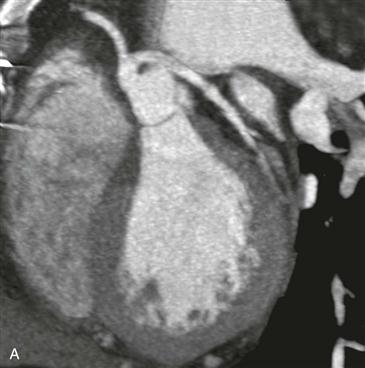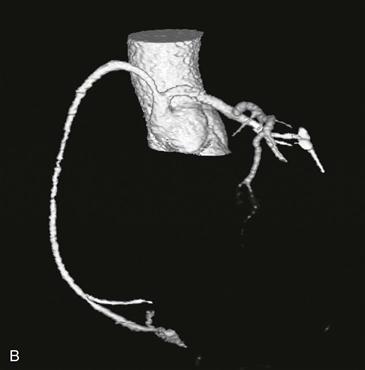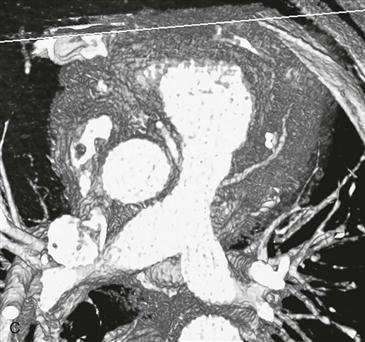CASE 105




1. Which of the following are potential paths of an anomalous coronary artery? (Choose all that apply.)
A. Retroaortic
B. Prepulmonic
C. Septal
2. Which of the following best characterizes the course of the left anterior descending coronary artery?
A. Retroaortic
B. Prepulmonic
C. Septal
3. What is the most appropriate management?
A. No treatment
D. Surgery
4. What is an advantage of ECG-gated CT over coronary angiography for the evaluation of an anomalous coronary artery?
ANSWERS
CASE 105
Reference
Young PM, Gerber TC, Williamson EE, et al. Cardiac imaging: part 2, normal, variant, and anomalous configurations of the coronary vasculature. AJR Am J Roentgenol. 2011;197(4):816–826.
Cross-Reference
Cardiac Imaging: The REQUISITES, ed 3, pp 225–228.
Comment
Clinical Features
Ectopic origin of a coronary artery is the most frequently encountered coronary artery anomaly. Certain forms are benign and are not associated with an increased risk of sudden death. An interarterial course of the left anterior descending artery, as shown in this patient, is associated with an increased risk of angina, arrhythmia, myocardial ischemia, and sudden death, and it generally requires surgical correction. Available surgical options include coronary artery bypass graft surgery, unroofing, and reimplantation of the anomalous vessel. Coronary angiography can detect an anomalous vessel but often cannot identify the course and relationship to the pulmonary artery and aorta. CT angiography guides management because it depicts the course of the anomalous vessel as well as its origin.







